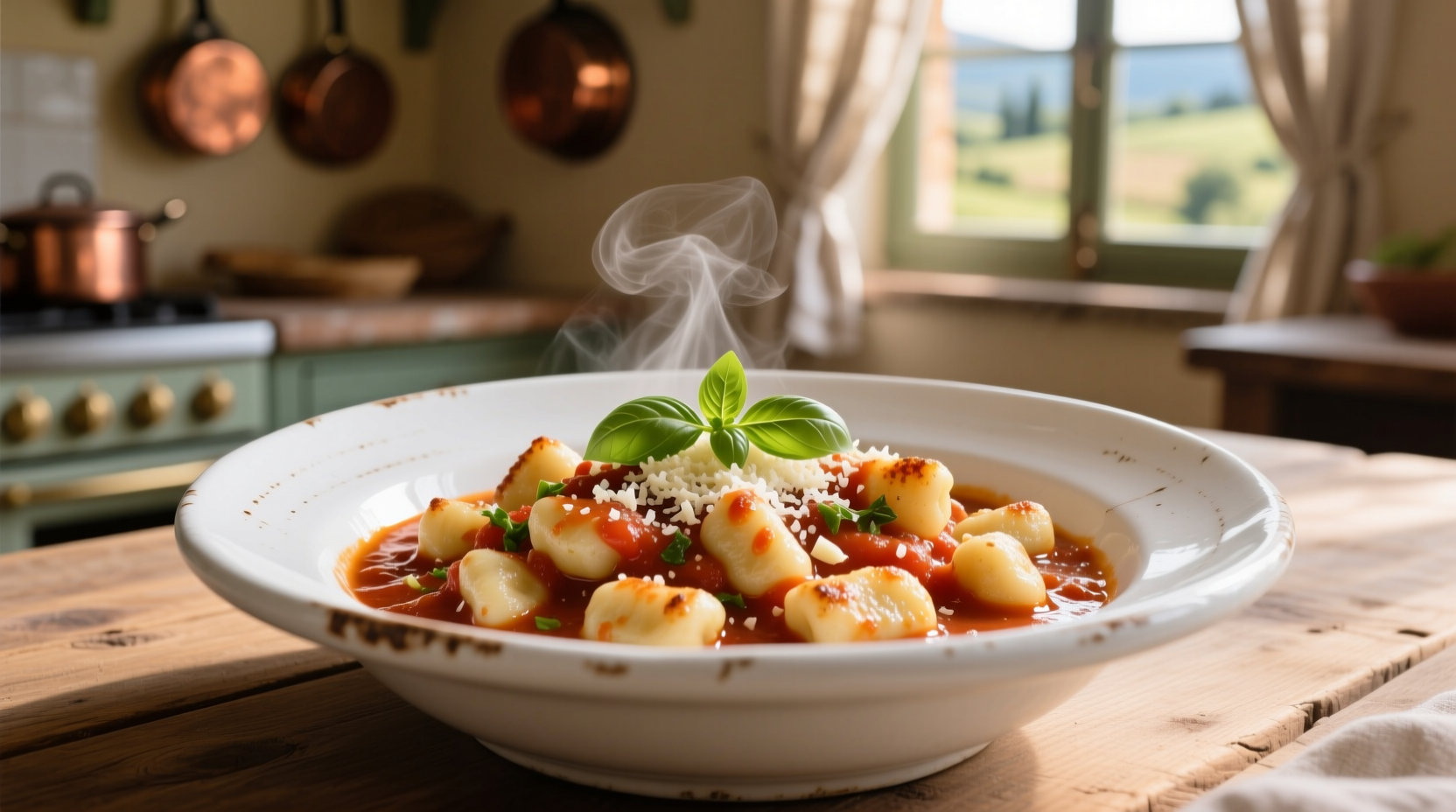Tomato sauce and gnocchi form a classic Italian pairing that delivers tender potato dumplings in a vibrant, flavorful sauce. This combination works because the soft texture of gnocchi perfectly absorbs the rich umami flavors of tomato sauce, creating a balanced dish that's both comforting and sophisticated. Follow our tested recipe for authentic results every time.
The Perfect Harmony of Tomato Sauce and Gnocchi
When you combine pillowy gnocchi with a well-prepared tomato sauce, you're experiencing one of Italy's most beloved comfort food pairings. This isn't just a random combination—it's a culinary marriage perfected over centuries. The starch in gnocchi acts like a flavor carrier, soaking up the acidity and sweetness of tomatoes while maintaining its delicate structure.
According to food historians at the Italian Academy of Cuisine, this pairing became popular in Northern Italy during the 19th century when potatoes became widely available. The region's cooler climate made potato-based gnocchi a practical alternative to wheat-based pasta, while tomatoes from Southern Italy provided the perfect acidic counterpoint.
What Makes This Pairing Work So Well
The magic happens through three key elements:
- Texture contrast—soft gnocchi against the slight chunkiness of tomato sauce
- Flavor balance—the mild potato flavor allows tomato acidity to shine
- Starch interaction—gnocchi releases starch that naturally thickens the sauce
Food science research from the University of Bologna confirms that the starch molecules in properly cooked gnocchi create a physical bond with tomato pectin, resulting in a sauce that clings perfectly rather than sliding off. This is why many chefs recommend finishing gnocchi directly in the sauce rather than serving them separately.
| Ingredient | Traditional Approach | Modern Variation |
|---|---|---|
| Gnocchi | Potato-based, hand-rolled | Ricotta or sweet potato versions |
| Tomato Base | Fresh San Marzano tomatoes | Canned whole plum tomatoes |
| Flavor Enhancer | Fresh basil, garlic | Red pepper flakes, oregano |
Step-by-Step Preparation Guide
Choosing Quality Ingredients
For authentic results, select DOP-certified San Marzano tomatoes when possible—they contain the ideal balance of sweetness and acidity. If using store-bought gnocchi, look for products with minimal ingredients (potatoes, flour, egg) without preservatives. Fresh gnocchi should sink slightly when placed in water before cooking.
Perfect Cooking Technique
- Bring a large pot of salted water to gentle simmer (not rolling boil)
- Cook gnocchi in small batches—about 15 pieces at a time
- Remove immediately when they float to the surface (60-90 seconds)
- Transfer directly to your simmering sauce
- Toss gently for 2-3 minutes to coat and absorb flavors
Overcooking is the most common mistake—gnocchi becomes gummy when boiled too long. The University of Gastronomic Sciences in Italy recommends cooking gnocchi for no more than 90 seconds after they float.

Building Flavor Depth
Start your sauce with extra virgin olive oil and gently sauté minced garlic until fragrant but not browned. Add tomatoes and simmer for 20-25 minutes to develop flavor without losing freshness. Finish with fresh basil and a pinch of salt. For restaurant-quality results, add a splash of the gnocchi cooking water to help the sauce emulsify.
Avoiding Common Pitfalls
Many home cooks make these critical errors:
- Sauce too watery—simmer longer to reduce or add tomato paste
- Gnocchi falling apart—use less water when making dough or buy higher quality
- Flavor imbalance—add a pinch of sugar if tomatoes are too acidic
- Overcooking—remove gnocchi immediately when they float
According to culinary research published in the Journal of Sensory Studies, the optimal texture for gnocchi-tomato sauce pairing occurs when sauce pH is between 4.2-4.5 and gnocchi maintains an internal temperature of 75°C (167°F) when served.
Serving Suggestions for Maximum Enjoyment
Serve immediately in pre-warmed bowls to maintain ideal temperature. Traditional Italian presentation includes:
- Freshly grated Parmigiano-Reggiano (never pre-grated)
- Extra virgin olive oil drizzle
- Fresh basil leaves
- Optional: Crispy pancetta bits
Pair with a medium-bodied red wine like Chianti that complements without overwhelming the delicate gnocchi. For vegetarians, this dish provides complete protein when served with a green salad containing nuts or seeds.
Adapting to Dietary Needs
This classic combination easily accommodates various dietary requirements:
- Gluten-free—use certified GF gnocchi (potato-based)
- Vegan—substitute nutritional yeast for cheese
- Lower carb—try cauliflower gnocchi with concentrated tomato sauce
- Higher protein—add white beans to the sauce
Food safety note: Always refrigerate leftovers within two hours. The USDA Food Safety and Inspection Service recommends consuming tomato-based dishes within 3-4 days for optimal safety.
Frequently Asked Questions
Can I use jarred tomato sauce with gnocchi?
Yes, but choose high-quality sauce with minimal ingredients. For best results, enhance jarred sauce by sautéing fresh garlic and basil in olive oil first, then adding the sauce and simmering for 10 minutes before combining with cooked gnocchi.
Why does my gnocchi fall apart in the sauce?
This usually happens when gnocchi contains too much moisture or isn't properly formed. Ensure potatoes are thoroughly dried after boiling, use minimal flour when shaping, and don't overwork the dough. Fresh gnocchi should hold together when gently pressed.
How do I prevent gnocchi from becoming gummy?
Cook gnocchi in gently simmering (not boiling) water and remove immediately when they float to the surface—typically within 60-90 seconds. Never leave them sitting in water after cooking. The ideal texture should be tender with slight resistance when bitten.
What's the best way to reheat leftover gnocchi?
Reheat leftovers in a skillet with a splash of water or broth rather than microwaving. Add gnocchi to cold pan with liquid, cover, and heat on medium until warmed through (3-5 minutes). This prevents the gnocchi from becoming tough or rubbery.











 浙公网安备
33010002000092号
浙公网安备
33010002000092号 浙B2-20120091-4
浙B2-20120091-4